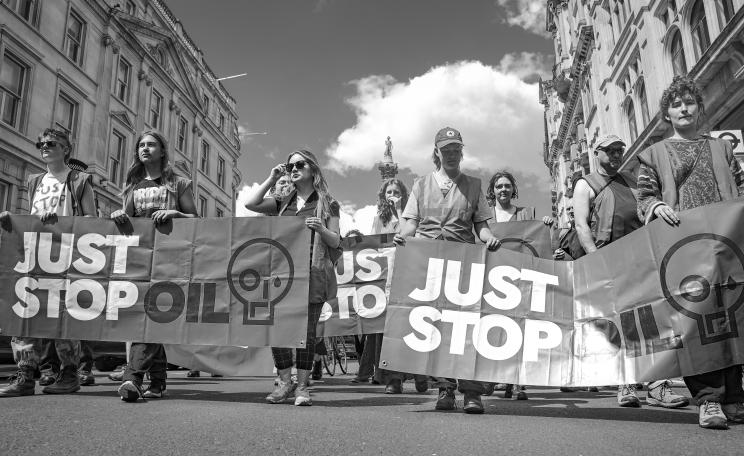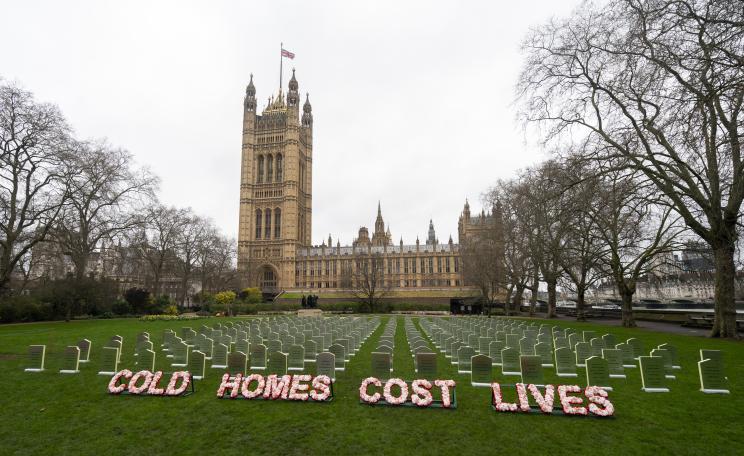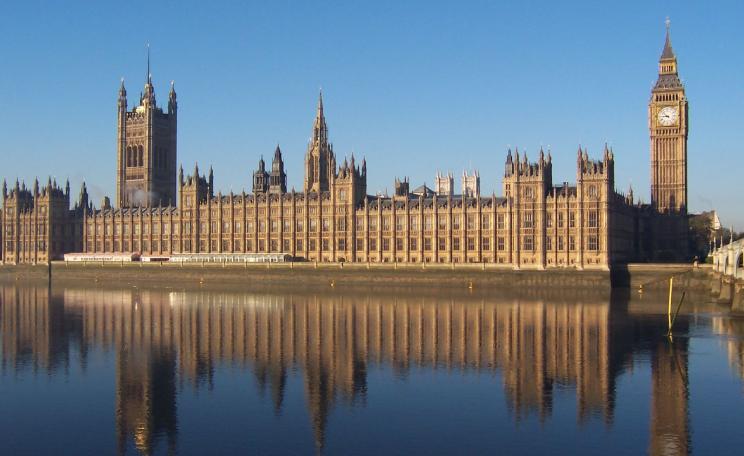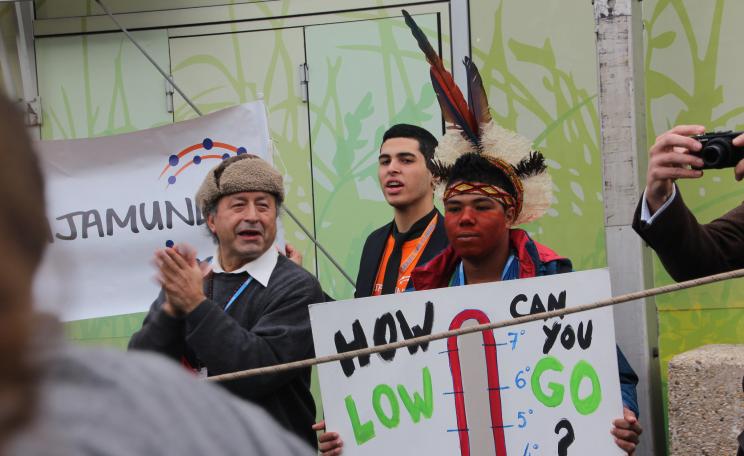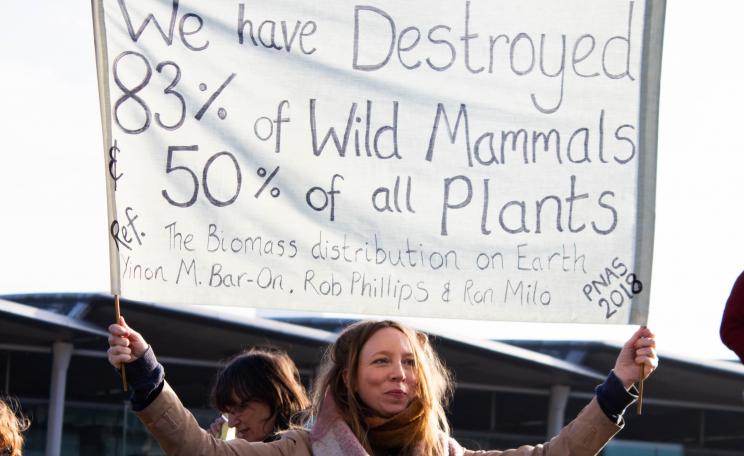x
What if – and we might want to whisper this – action doesn’t ease climate anxiety. It’s hard to go a few days without reading a news headline about the catastrophic impacts of the climate and biodiversity emergency.
This article first appeared in the latest issue of the Resurgence & Ecologist magazine. Find out more.
Naturally - and rationally, might I add - climate anxiety is at an all-time high. Many don’t feel equipped to navigate these uncomfortable feelings, and the suggestion ‘Got climate anxiety? Take action!’ is moving rapidly into mainstream thinking.
But I argue that this could be amplifying our negative psycho-social experiences rather than easing them.
Eco-anxiety
What is climate anxiety? I disclaim now that I’m not a psychologist. I was a youth climate activist who campaigned and helped mobilise more than 80,000 people to the streets for climate justice.
I have experienced the rife rates of eco-anxiety, burnout and poor mental health that are prolific in youth climate action spaces. After my own burnout experience, four years ago, at the age of 24, I started an initiative called The Resilience Project to enable and equip youth with the emotional and psychological resilience to navigate the climate emergency.

Our youth-led organisation now trains changemakers over eight weeks with a peer-support and learning model, creating a very rare space for the generation born into and inheriting the climate crisis to feel seen, heard and understood.
From working with now hundreds of young people around the world who have been experiencing climate anxiety – or eco-anxiety – I can see that the current definitions of this buzz-word are limited.
First, definitions like ‘fear of environmental doom’ bypass the very real and present impacts that are happening around the world, particularly in the global south and on low-lying islands.
Secondly, the emphasis on words like ‘anxiety’ or ‘fear’ does not accurately capture what’s happening cognitively and psychologically in young people.
This year The Resilience Project hosted a Global Convening on Eco-anxiety to find that the most common self-identified experiences weren’t anxiety, but helplessness, powerlessness and anger.
Eco-gaslighting
Terms like ‘eco-gaslighting’ elucidated how complex the picture beyond ‘anxiety’ really is.
Rather, climate anxiety, as defined by the Climate Psychology Alliance, is the physical, mental and emotional responses to dangerous changes in the climate system.
Climate anxiety is relative, which means that it intensifies with government inaction and when we feel like we’re alone in caring.
Therefore, I see interpersonal dimensions such as alienation, isolation and betrayal as more prevalent - meaning a crisis of connection is baked into climate anxiety.
So my first important point is that we simultaneously have a crisis of climate and a crisis of connection.
Powerless
Climate anxiety is uncomfortable, but feeling powerless and holding this giant existential crisis alone is what makes it feel unbearable.
Surely, taking actions will help stop the anxiety? Joining a climate movement when I was 21 tripled my climate anxiety because I was confronted with the science and the projections.
While I know that climate anxiety is a healthy response to an emergency, the complex picture of movement politics coupled with the complete lack of space to just talk about our emotions started to degrade my sense of wellbeing.
I have since heard the stories of hundreds of other young people woven together with the same threads: the urgency narrative is so strong that we must prioritise action over rest, joy or healthy boundaries.
These are narratives of martyrdom and exclusion; talking about our emotions is self-indulgent, a waste of precious time and bad solidarity; feelings of guilt that we’re ‘not doing enough’ are both personal and impressed upon us; burnout is considered a badge of honour – if you’re not burnt out to the core, then you’re... Not. Doing. Enough.
Permission
I witnessed this pressure cooker narrative leading to cycles of ‘boom and bust’, where young people enter movement spaces, inspired to take action to control their uncomfortable eco-anxiety, but without adequate tools, knowledge or support.
They might then experience something that feels like burnout and withdraw from the movement entirely.
It’s a model that some existing groups rely on entirely, to burn through people power to maximise external impact.
This is not the case in all movement spaces, and things have changed slightly.
I have been part of movement spaces in the last few years where we hold firm boundaries, celebrate our identities outside of the fight, and give each other permission to express joy.
Shrink
Unsurprisingly these movements have been the most successful in terms of our aims, outcomes and feelings of hopefulness.
My second important point is therefore that some action may serve to intensify climate anxiety in the long run, as it can intensify those relational aspects of loneliness, resignation, exhaustion and hopelessness.
Internal vs external action. If action is to be a ‘remedy’, then we must also turn our gaze towards the culture inside the group taking action.
We must confront the narratives that exist in the space that shrink space for connection, joy and togetherness.
If the relative property of climate anxiety means that it intensifies with government inaction and it takes a back seat when we feel hopeful and supported and a sense of belonging, the question shifts from ‘How do we fix climate anxiety?’ to ‘How do we build spaces to incubate climate action that by their very nature work to make us feel hopeful and supported?’
'Woo-woo'
Then we get to the juicy stuff. What if we can take action in a way that transforms us and our communities at the same time?
We ease the crisis of connection, and the possibilities expand from reducing carbon emissions to building societies of justice and kinship.
My third important point is therefore that ‘taking action’ is critical and – a big ‘and’ – it can alleviate eco-anxiety when the hub of that action is built on mutual support.
"But we don't have time for personal growth and all this 'woo-woo' drama!" Yes, we do. Only through our internal activism can we truly develop sustainable external activism.
This Author
Katie Hodgetts is a youth changemaker and the founder of The Resilience Project. Instagram @ourresilienceproject. She is on Twitter/X @kthodgetts, Instagram @kthodgetts.


